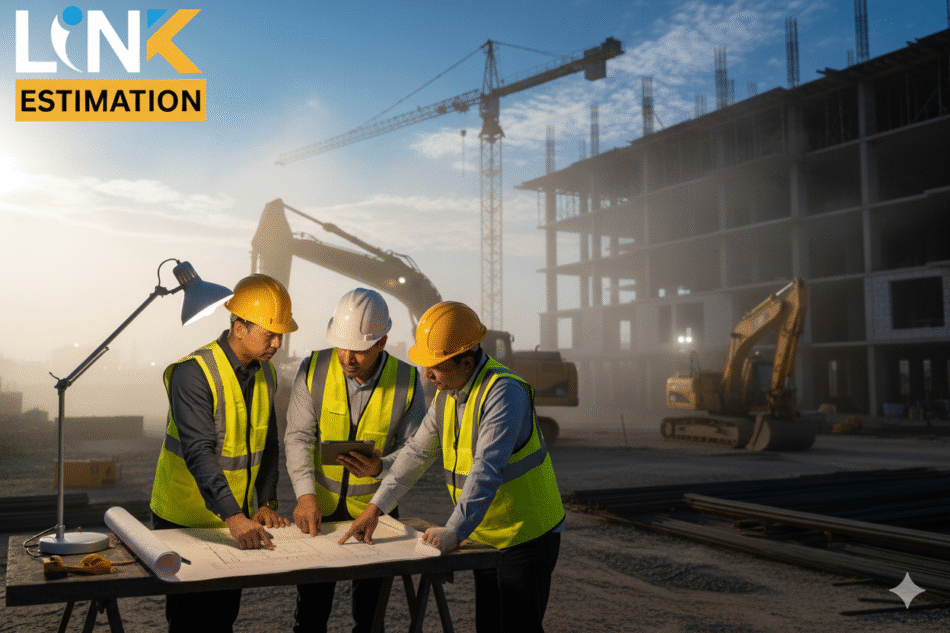Cost Construction Estimation – A Complete Guide for Accurate Budgeting
Construction projects rely heavily on accurate budget planning to avoid cost overruns, material shortages, and timeline delays. Cost construction estimation plays a critical role in defining the financial roadmap of a project before construction begins. Whether you’re a contractor, homeowner, developer, or project manager, precise estimation ensures smarter decisions, profitability, and successful project execution.
In this guide, we break down what cost construction estimation means, its benefits, essential steps, costing methods, and how professional estimators can streamline the process for better results.
What is Cost Construction Estimation?
Cost construction estimation is the process of forecasting the total financial requirement to complete a construction project. It includes calculating:
-
Material costs
-
Labor expenses
-
Equipment charges
-
Transportation
-
Overheads
-
Permits and taxes
-
Contingency allowances
The estimation serves as a financial blueprint that helps builders and owners prepare realistic budgets and control project spending.
Why Cost Construction Estimation Matters
Accurate cost estimation delivers several crucial benefits, such as:
1. Prevents Budget Overruns
Wrong estimates can lead to stalled projects. A realistic costing approach helps avoid financial surprises.
2. Enhances Decision-Making
Stakeholders can decide material grades, construction techniques, and contract types based on pricing insights.
3. Supports Project Planning
Time schedules, resource allocation, and procurement planning depend on reliable cost estimation.
4. Boosts Profitability
Contractors improve margins by comparing markup, overheads, and cost-to-revenue ratios.
Key Components of Construction Cost Estimation
A complete estimation should include:
1. Material Costs
Calculating quantities and current market prices for:
-
Concrete
-
Steel
-
Bricks
-
Reinforcement
-
Electrical and plumbing materials
-
Finishing items
2. Labor Costs
Estimation includes:
-
Skilled and unskilled labor rates
-
Labor hours
-
Productivity efficiency
-
Local wage standards
3. Equipment and Machinery
Hiring or owning equipment like mixers, cranes, compactors, and transport vehicles is added to the budget.
4. Overheads and Indirect Costs
Examples include:
-
Site administration
-
Office operations
-
Marketing
-
Temporary facilities
-
Equipment maintenance
5. Contingency Costs
A 5–10% financial buffer is often included to cover price fluctuations and unexpected on-site changes.
Common Methods of Cost Construction Estimation
Several industry-standard techniques are used for estimation depending on the project type:
1. Detailed Quantity Takeoff
Measurement of all work items and applying unit rates.
Most accurate but time-consuming.
2. Unit Cost Method
Uses standardized rates based on previous projects or regional price databases.
3. Parametric Estimation
Uses statistical modeling from historical project data to generate cost patterns.
4. Square Foot Method
A quick estimate based on cost per sq. ft., ideal for early project phases.
5. Supplier and Contractor Quotations
Real-time market quotations from vendors and subcontractors ensure updated pricing.
Steps Involved in Cost Construction Estimation
A professional estimate typically includes:
1. Project Scope Analysis
Understanding floor area, design specifications, drawings, and material types.
2. Quantity Takeoff
Listing and measuring all billable work items: concrete, rebar, tiles, etc.
3. Applying Unit Costs
Rates are applied using market pricing, estimation software, or databases.
4. Adding Labor and Equipment Charges
Based on local wage rates and rent/operation costs.
5. Including Overheads
Indirect expenses are added to the cost sheet.
6. Finalizing Budget with Contingency
A contingency margin ensures financial protection.
Technology and Tools Used for Estimation
Modern construction estimation uses digital tools for speed and accuracy, such as:
-
Excel-based BOQ models
-
Construction estimating software
-
BIM-based quantity extraction
-
Cost databases and price lists
These tools reduce manual errors and deliver project-ready cost sheets.
Who Needs Cost Construction Estimation?
This service is essential for:
-
Contractors
-
Builders
-
Architects
-
Property developers
-
Government agencies
-
Homeowners planning construction
Anyone involved in construction benefits from a professional estimate before signing contracts or starting work.
Professional Estimators Ensure Better Accuracy
Hiring expert estimators offers benefits such as:
-
Market-based updated rates
-
Experienced cost benchmarking
-
Risk analysis
-
Transparent and detailed reports
-
Faster turnaround
Professional services result in lower financial risk and higher project confidence.
Conclusion
Cost construction estimation is the foundation of a successful construction project. From planning budgets and comparing vendors to minimizing financial uncertainty, a reliable estimate empowers smarter decisions and smoother execution. Whether you’re building a home, commercial structure, or industrial facility, investing in an accurate cost estimate ensures long-term savings and a professionally managed project.








